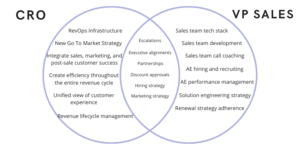Welcome to “The Pipeline” — a new weekly column from HubSpot, featuring actionable advice and insight from real sales leaders.
Time is a precious resource in sales — the efficacy of your sales process, whether a deal winds up closed-won, and virtually every KPI used to gauge your performance all hinge upon how effectively you spend yours.
But efficiently and effectively allocating your time can be tricky in sales — and running into at least a few time-wasters here and there is par for the course. That’s why you need to stay abreast of any potential time-draining hitches and understand how to remedy them when you hit them.
To help you get there, we reached out to a few sales leaders for some perspective on common ways sales professionals waste their time and how to best avoid those pitfalls. Let’s take a look at what they had to say.
1. They don’t use tools at their disposal.
When we reached out to Will Smith — Director of Growth at RevPartners — about the subject, he touched on how some sales professionals waste time by not leveraging the sales tech and other resources at their disposal.
According to him, “Salespeople, like everybody, often ignore the small efforts that pay dividends in the longer term. The sales enablement tools available today can drastically impact a salesperson’s efficiency, but a lack of adoption leads to wasted time.
“For example, it takes around five minutes to set up your meeting link. If you spend even five minutes a day wasted trying to sync on calendar availability, every minute saved after day one is net profit. If you leverage a product like HubSpot and you’re not using the sales enablement tools, it’s like cutting your lawn with a scythe while a lawnmower sits in your garage.”
Zeenath Kuraisha, Head of Sales Advisory and Academy at APACSMA, expressed a similar sentiment. She says, “Some reps don’t use the technology and tools they have in hand to their advantage — even if they’re as simple as using email sequencing, generative AI, meeting scheduling resources, forecasting tools, dashboarding, or quote tools. Using some of these resources helps give time back to customer engagement.”
How to Avoid This Time Waster
Avoiding this time-waster is relatively simple. You can start by taking an inventory of the resources you have at your disposal — understand your sales org‘s tech stack and what each program can do for you. Once you have a grasp on what’s available, fold those tools into your day-to-day.
Your company‘s leadership probably didn’t invest in those resources arbitrarily — those purchases required thorough research and capital. If you don‘t at least give the tools they’ve provided you with a shot, you’re selling both yourself and your employer short.
2. They waste time on bad-fit leads.
Smith also spoke to the need for salespeople to identify and avoid low-intent prospects. He says, “Hindsight is 20-20. It’s easy to identify the red flags a low-intent prospect shows once they hit closed-lost or unqualified — but identifying it at the moment is the key. Not only are hours wasted on low-intent leads, but those hours often contribute to stagnation in higher-intent leads, reducing their close rate.”
How to Avoid This Time Waster
He also offered some perspective on how to flag these prospects as you encounter them.
According to him, “Identifying key indicators of good or bad fits is crucial to keeping salespeople focused on the right things. There are safeguards that can be put in place. Deal stage entry requirements, lead scoring, and conversion reporting all allow you to narrow your focus to a spotlight. Don’t allow discernment to be your most underutilized tool”
3. They get fixated on single-threaded accounts.
Beau Brooks, VP of Worldwide Sales at Teamwork, stressed that salespeople need to remain mindful of how invested they get in single-threaded accounts.
By his account, “We see reps wasting time on single-threaded accounts that are unwilling to bring additional players into the conversation. We know our win rate nearly doubles when accounts are multi-threaded and climbs another 25% when we have four or more stakeholders in the deal conversation. Spending time chasing deals that are stalled at just one stakeholder and no path forward is a terrible use of a rep’s valuable time.”
Julie Thomas, President and CEO of ValueSelling Associates, echoed that sentiment. She says, “Sales reps often fail to recognize all the individuals involved in a buying decision. They have a single point of contact who is willing to meet with them — one who seems enamored by and interested in their solution. The problem is that if that individual doesn’t have the ability to buy, giving the rep a false sense of security.”
How to Avoid This Time Waster
According to Thomas, sales professionals can beat this time-waster “by multi-threading and validating the decision-makers and decision-making process through triangulation. By doing so, a sales rep can ensure the opportunity is real and mitigate the risk of wasting time on unproductive meetings that cannot and do not advance the opportunity toward closure.”
4. They allow little distractions to compound on themselves.
Joanne Black, Founder of No More Cold Calling, offered a straightforward take on how reps often waste their time. She says reps need to remain mindful of the little things that might be distracting them.
According to her, “There are as many distractions at home as there are in an office — even if people aren’t coming into your home office with a ‘quick’ question. It is easy to get distracted by activities like checking and replying to all of your emails and catching up on LinkedIn. It’s easy to wonder who’s writing you today, get eager about reading what they wrote, wind up getting hooked, and let an hour pass.”
How to Avoid This Time Waster
So what’s the alternative? Well, Black suggests that you “do what’s ‘closest to cash’ first thing every day — finishing a proposal, following up with client requests, asking for referrals, saying no to meetings that will take you off course, researching prospects to ensure a robust pipeline, or sending invoices are all examples of activities that should take precedence.”
5. They over-complicate their sales processes.
Ben Rubin, Co-Founder and Growth Consultant at SAVI Consulting Group, says that salespeople wind up wasting time by trying to do too much.
According to him, “It’s easy to think more is more but less can be a lot more here. Salespeople who overcomplicate their sales processes waste time and create unnecessary obstacles for themselves and their customers. You may even miss the buying window if you create unnecessary complications.”
How to Avoid This Time Waster
So how do you remedy this one? According to Rubin, “You should simplify your approach to enhance productivity and customer experience. You need to analyze your current sales processes and identify areas where unnecessary steps or complexity exist.
“Streamline the process by eliminating redundant tasks, automating repetitive actions, and leveraging technology tools to enhance efficiency. Keep communication clear and concise, ensuring customers understand each step along the way.”
6. They neglect follow-ups and fail to nurture meaningful customer relationships.
Rubin also spoke to the need for salespeople to stay on top of existing customer relationships.
He says, “Neglecting follow-ups and failing to nurture meaningful customer relationships make for a definite recipe for wasting time and spinning up dead-end opportunities. Salespeople who overlook the importance of staying in touch waste valuable chances for repeat business and referrals. To unlock your sales potential, prioritize the establishment of robust and ongoing relationships with your customers, cultivating trust and loyalty along the way.”
How to Avoid This Time Waster
Rubin suggests that you can avoid this time-waster by “[developing] a systematic approach to follow-ups — ensuring you promptly and consistently engage with prospects and existing customers.
“Use customer relationship management (CRM) tools to organize and track interactions, set reminders, and personalize communication. Invest time in understanding your customers’ needs and preferences to offer tailored solutions and demonstrate your commitment to their success.”
Wasting time every now and then happens in every facet of life, but it can have higher stakes in sales. They don’t say “time is money” for nothing — if you want to consistently conduct effective, efficient sales efforts, you need to know the ways you might be unproductively allocating your time. From there, you can piece together ways to streamline the activities that might be holding you back.

![]()




